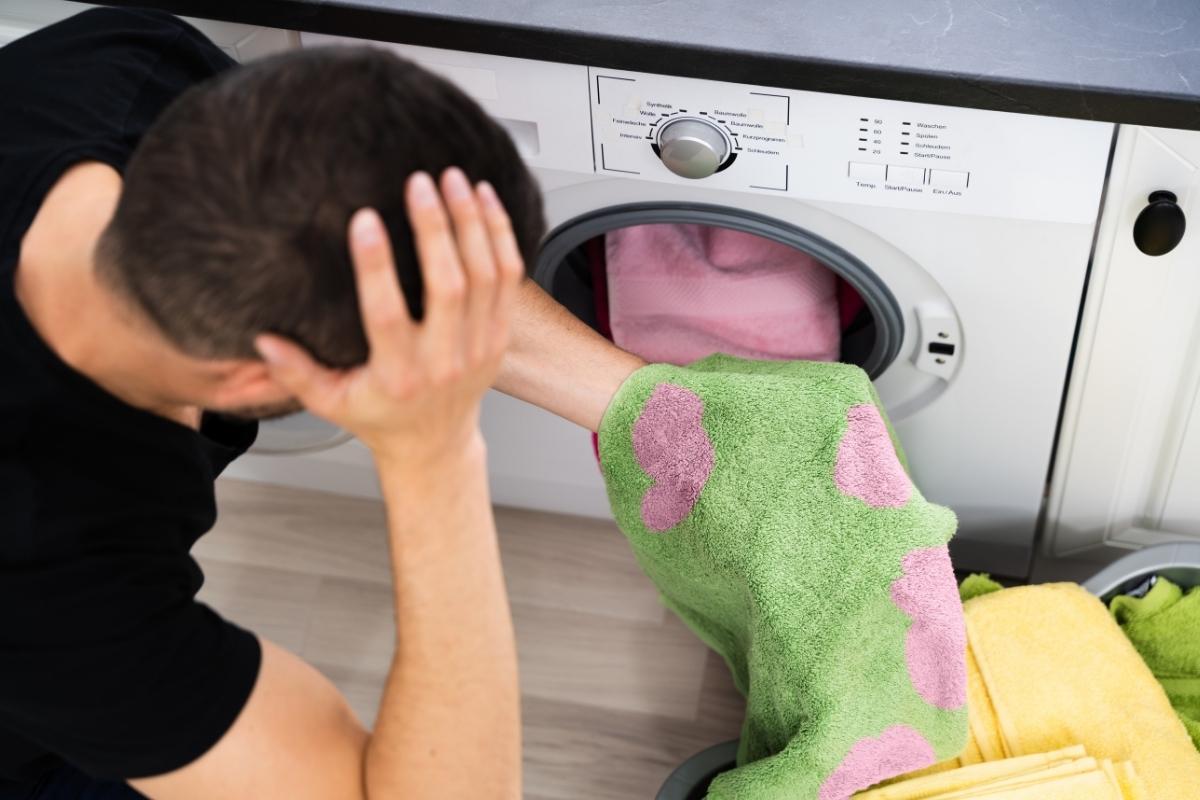You toss your clothes into the washing machine, expecting them to emerge fresh and spotless, but to your surprise, they come out with mysterious grey stains. What went wrong? While disheartening, this issue is more common than you might think.
This article aims to guide you through identifying the causes of these unsightly marks and offers solutions to treat and prevent them.
Identifying the Culprit
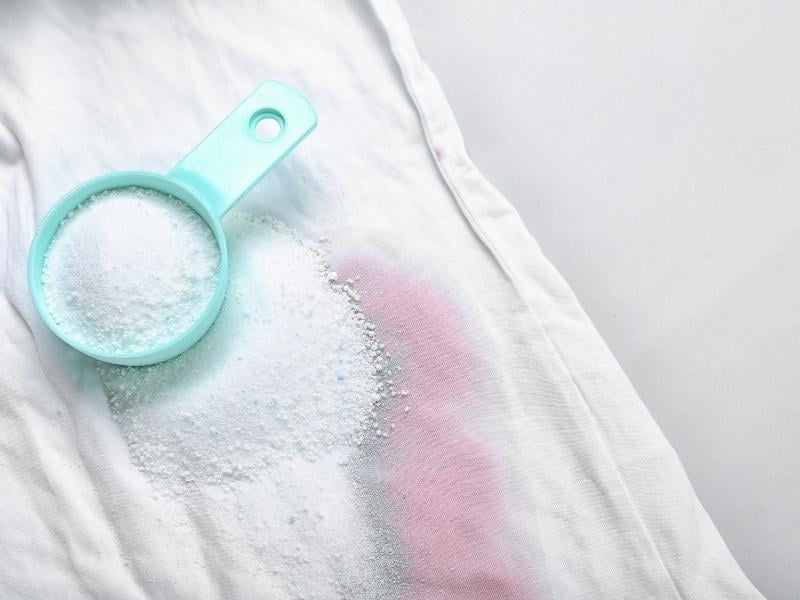
Soap Residue
One of the most frequent offenders regarding grey stains is soap residue. This usually happens when the detergent isn’t fully dissolved in the water. Overdosing on detergent is another common mistake.
Measuring the detergent according to the load size and water hardness is essential, as using too much can lead to a soapy film that gets imprinted on fabrics.
Metal in Water
Iron or other metals in your water supply can be another reason behind those grey stains. When metal ions mix with detergent, they can form insoluble particles that cling to the fabric.
These particles can be tough to remove in colder temperatures. You might also notice these stains appearing more frequently if your home relies on well water, which often has a higher mineral content.
Fabric Bleeding
Mixing colors can lead to fabric bleeding, another common cause of grey stains. Garments that aren’t colorfast can release dye into the water, which may settle on lighter-colored clothing.
This is especially true for new clothes that haven’t been washed before. Always check care labels and do a patch test if uncertain about a garment’s colorfastness.
Dirt and Grime
You’d expect your washing machine to be a clean space, but accumulated dirt and grime can turn it into anything but. Old detergent, fabric softener, and lint can create a sludgy layer inside the drum, which may rub off your clothes, creating grey marks.
This issue is particularly problematic in high-efficiency machines that use less water, as there’s less liquid to flush away debris.
Hard Water
Another factor that can contribute to grey stains is hard water. Hard water contains high levels of calcium and magnesium, which can interact with detergent to form a scum that can adhere to fabrics.
This scum can stain clothes and make them feel stiff and uncomfortable to wear. The problem may worsen if the hard water leads to limescale buildup in your washing machine.
Remedial Steps for Removing Grey Stains
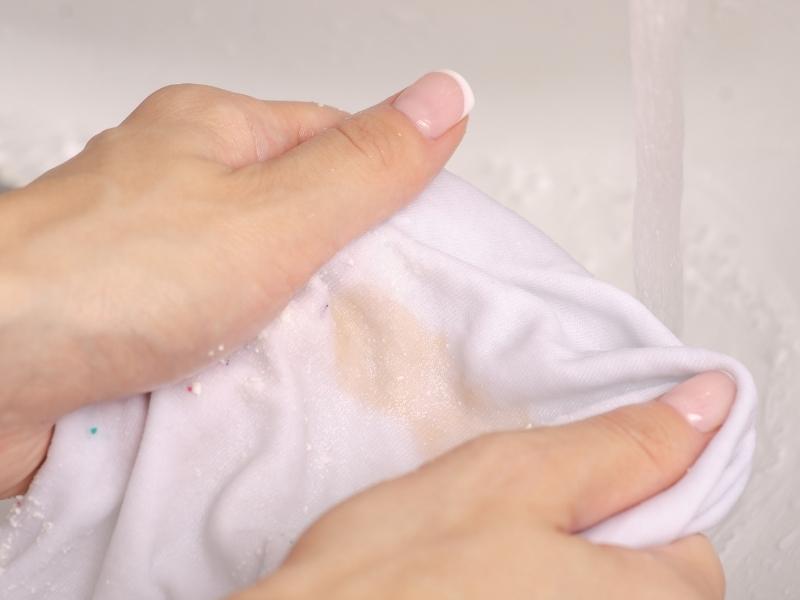
Stain Remover Pre-Treatment
Before rewashing the stained items, apply a stain remover directly to the grey marks. Follow the instructions on the product packaging for optimal results. Allow the garment to sit for a few minutes to let the stain remover penetrate the fabric.
Features
- Direct application on the stain: Allows targeted treatment, increasing the likelihood of stain removal.
- Penetrates fabric quickly: Fast-acting formulation helps in breaking down the stain molecules.
Pros
- Effective for a wide range of stains
- Quick and easy to apply
Cons
- May bleach or discolor certain fabrics
- It may require multiple applications for stubborn stains
Hot Water Soak
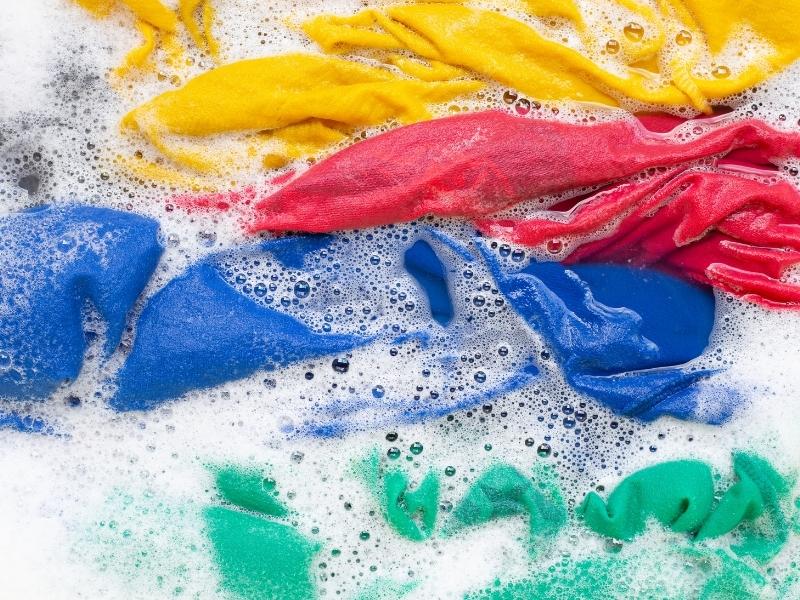
Soak the stained clothes in hot water for at least 30 minutes before rewashing them. Adding a tiny baking soda to the soak may help lift the stains.
However, be cautious when using hot water on delicate or color-sensitive fabrics, as it may cause shrinkage or color loss.
Features
- Soaking in hot water: Helps loosen the stain particles from the fabric.
- Optional addition of baking soda: This can neutralize odors and enhance stain removal.
Pros
- Softens and lifts many types of stains
- Can be cost-effective
Cons
- Risk of shrinkage or color loss in certain fabrics
- Not suitable for all garment types
Use Oxygen Bleach
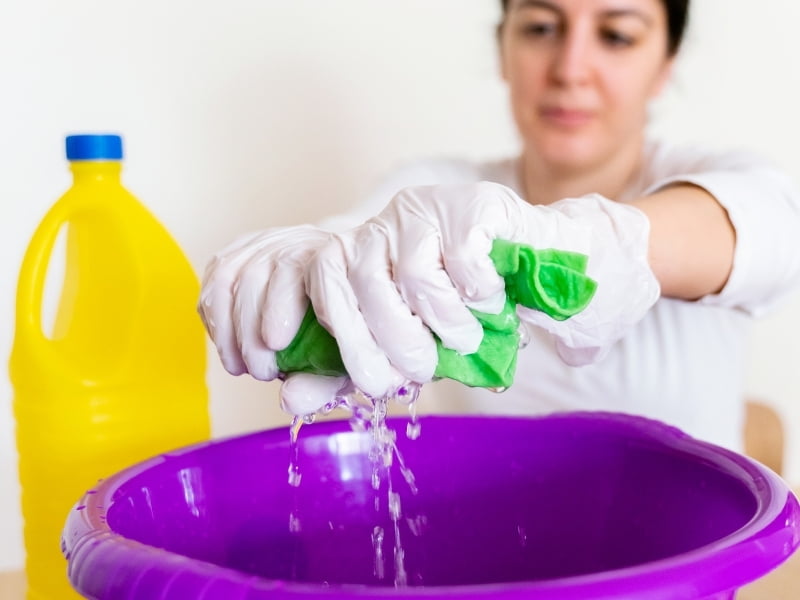
Oxygen bleach is a more fabric-friendly alternative to chlorine bleach and is effective in removing many types of stains, including grey ones. Add oxygen bleach to the drum and your detergent and cycle to treat the stained clothes.
Features
- Non-chlorine bleach: Less aggressive on fabrics while still being an effective stain remover.
- Added along with regular detergent: Boosts the overall washing performance.
Pros
- Gentle on most fabrics
- Effective on various types of stains
Cons
- It may not be as strong as chlorine bleach
- Pricier than regular bleach
High-Efficiency Wash
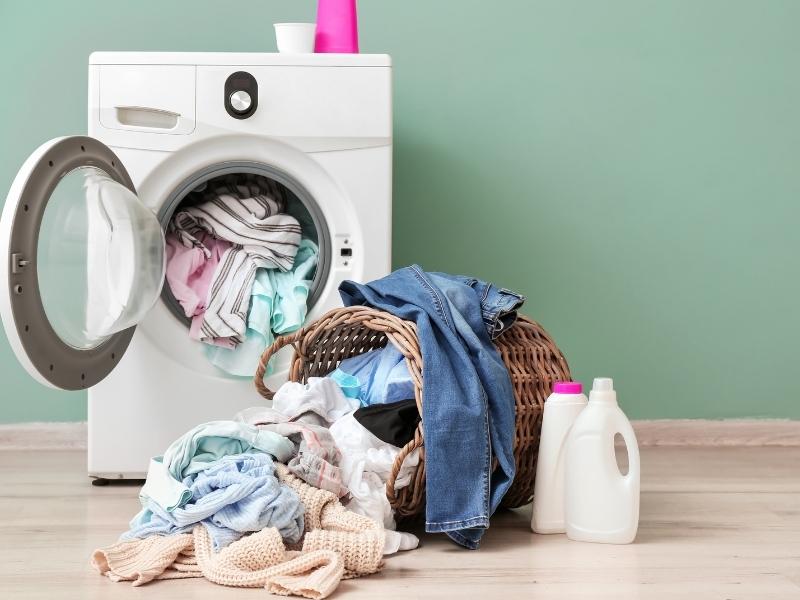
If your machine has a high-efficiency or “stain-removal” cycle, now is the time to use it. These settings typically use higher water levels and longer wash times to remove stains better.
Features
- Uses high water levels: More water helps to dislodge stubborn stains.
- Extended wash times: Longer cycles offer more time for stain removal.
Pros
- Enhanced stain removal
- Suitable for large, heavily soiled loads
Cons
- Consumes more water
- Longer wash cycle time
Preventive Measures
While remedial steps focus on removing existing stains, prevention is always better than cure. The “Preventive Measures” section aims to equip you with the knowledge and tactics to avoid the occurrence of grey stains in the first place.
Here are some steps you can take to prevent future laundry disappointments.
Sorting Clothes
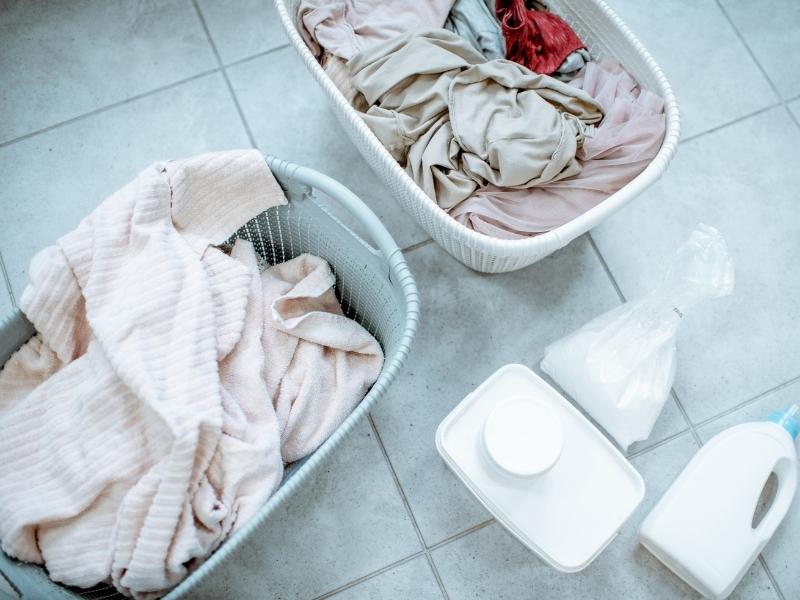
One of the simplest preventive measures you can take is sorting your laundry. Keep darks, lights, and colors in separate piles. Use mesh bags for delicate items to minimize the risk of color transfer and snags.
Using Quality Detergent
Not all detergents are created equal. A high-quality product will dissolve better and rinse more completely, reducing the risk of soap residue. Liquid detergents generally dissolve more quickly than powders, especially in colder temperatures.
Regular Maintenance
Maintenance isn’t just about reacting to problems; it’s about preventing them. Make a schedule to clean your washing machine at least once a month. This not only helps prevent stains but also prolongs the lifespan of your appliance.
Water Softener
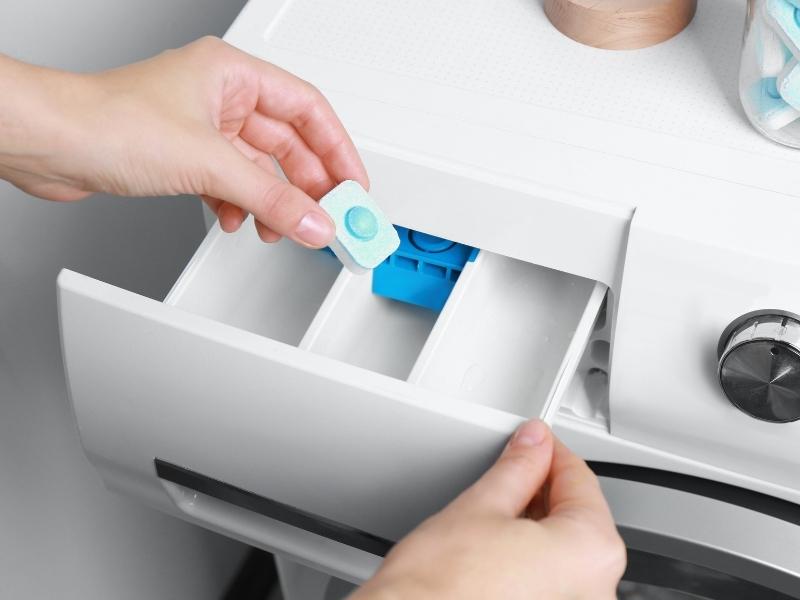
If you have hard water, investing in a water softener can be a game-changer. By reducing the mineral content of your water, you’ll have fewer issues with detergent scum and mineral deposits sticking to your clothes.
Test New Clothes
New garments can often bleed or transfer dye. To avoid this, consider washing them separately the first time.
You can also perform a “dye test” by soaking a hidden area of the garment in soapy water and pressing a white cloth against it. If dye transfers to the cloth, you’ll know to wash the item separately.
Read More: Can Dry Cleaning Remove Stains? The Facts and Limitations

